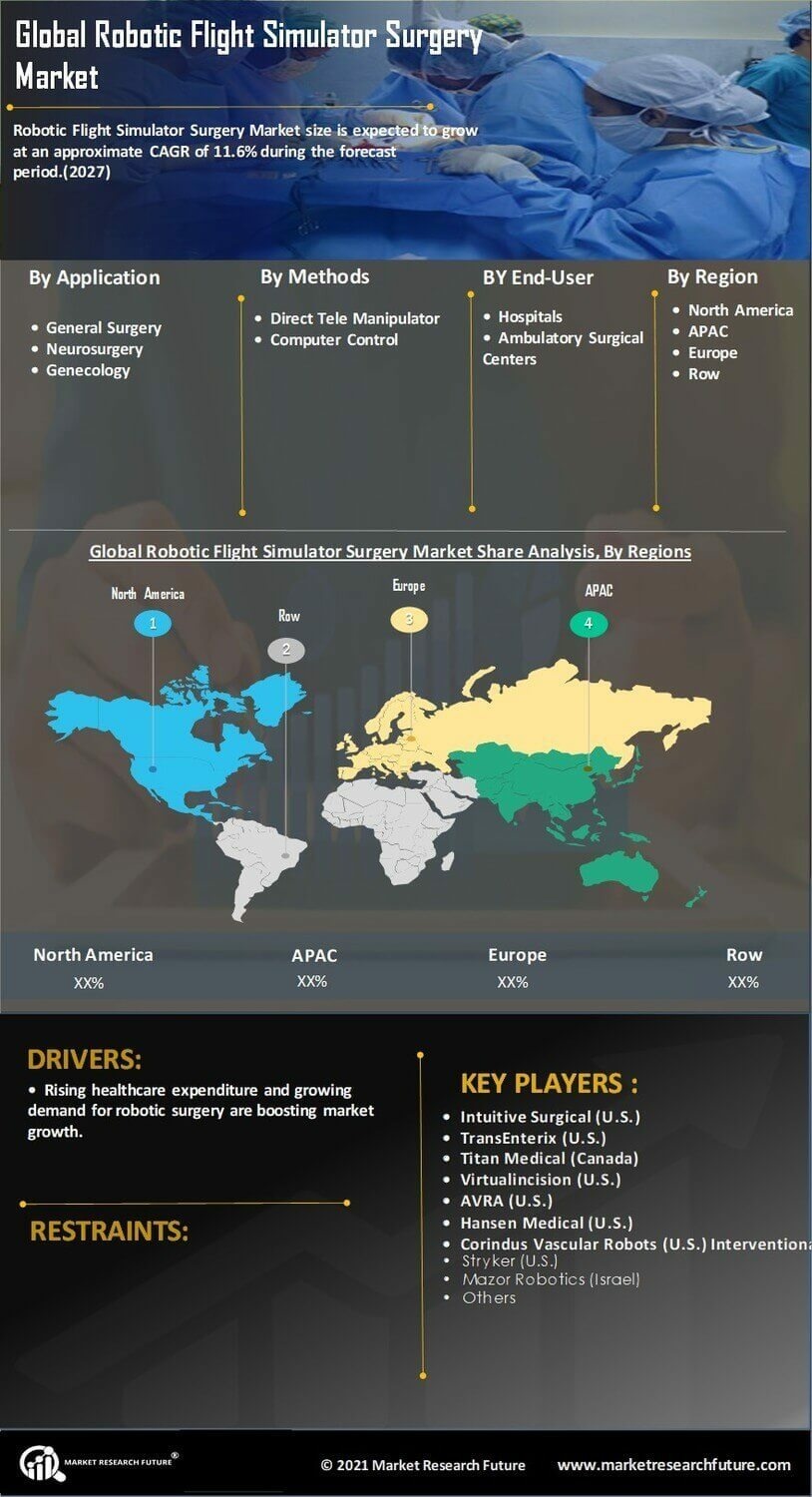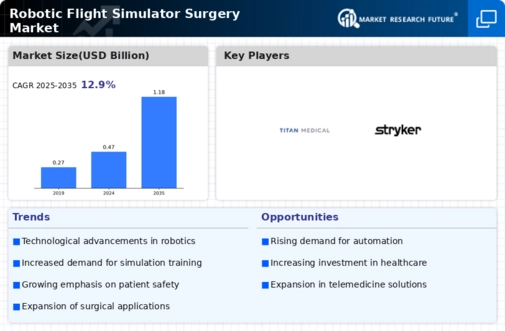Technological Advancements
The Global Robotic Flight Simulator Surgery Market Industry is experiencing rapid technological advancements that enhance the precision and effectiveness of surgical procedures. Innovations in robotic systems, such as improved haptic feedback and enhanced imaging capabilities, are transforming surgical training and practice. For instance, the integration of augmented reality in simulators allows for more immersive training experiences. As these technologies evolve, they are likely to attract more healthcare institutions to adopt robotic flight simulators, thereby driving market growth. The market is projected to reach 0.47 USD Billion in 2024, reflecting the increasing reliance on advanced surgical training tools.
Regulatory Support and Standardization
Regulatory support and standardization play a crucial role in shaping the Global Robotic Flight Simulator Surgery Market Industry. Governments and health organizations are increasingly establishing guidelines and standards for robotic surgeries, which can enhance safety and efficacy. Such regulations not only foster trust among healthcare providers but also encourage the adoption of robotic flight simulators for training purposes. As regulatory frameworks become more robust, they are likely to facilitate market growth by ensuring that surgical practices meet high standards. This regulatory environment is expected to support the industry's evolution, promoting the integration of advanced technologies in surgical training.
Growing Demand for Minimally Invasive Surgery
There is a notable increase in the demand for minimally invasive surgical procedures, which is significantly influencing the Global Robotic Flight Simulator Surgery Market Industry. These procedures are associated with reduced recovery times and lower complication rates, making them preferable for both patients and surgeons. Robotic flight simulators provide an effective platform for training surgeons in these techniques, ensuring they are well-prepared for real-life applications. As the healthcare sector continues to prioritize patient outcomes, the market is expected to grow, with projections indicating a rise to 1.18 USD Billion by 2035, driven by the adoption of robotic-assisted surgeries.
Increased Investment in Healthcare Infrastructure
Investment in healthcare infrastructure is a critical driver for the Global Robotic Flight Simulator Surgery Market Industry. Governments and private entities are increasingly allocating funds to enhance surgical facilities and training programs. This trend is particularly evident in developing regions, where the establishment of advanced medical centers is on the rise. Such investments not only improve access to cutting-edge surgical technologies but also promote the adoption of robotic flight simulators for training purposes. As a result, the market is poised for growth, with a projected CAGR of 8.73% from 2025 to 2035, reflecting the expanding healthcare landscape.
Rising Awareness and Acceptance of Robotic Surgery
The rising awareness and acceptance of robotic surgery among healthcare professionals and patients are pivotal for the Global Robotic Flight Simulator Surgery Market Industry. Educational initiatives and successful case studies are contributing to a growing understanding of the benefits of robotic-assisted procedures. As more surgeons become proficient in these techniques through simulation training, patient confidence in robotic surgeries is likely to increase. This shift in perception is expected to drive demand for robotic flight simulators, facilitating further market expansion. The industry is anticipated to witness substantial growth, aligning with the overall trends in surgical innovation.













Leave a Comment